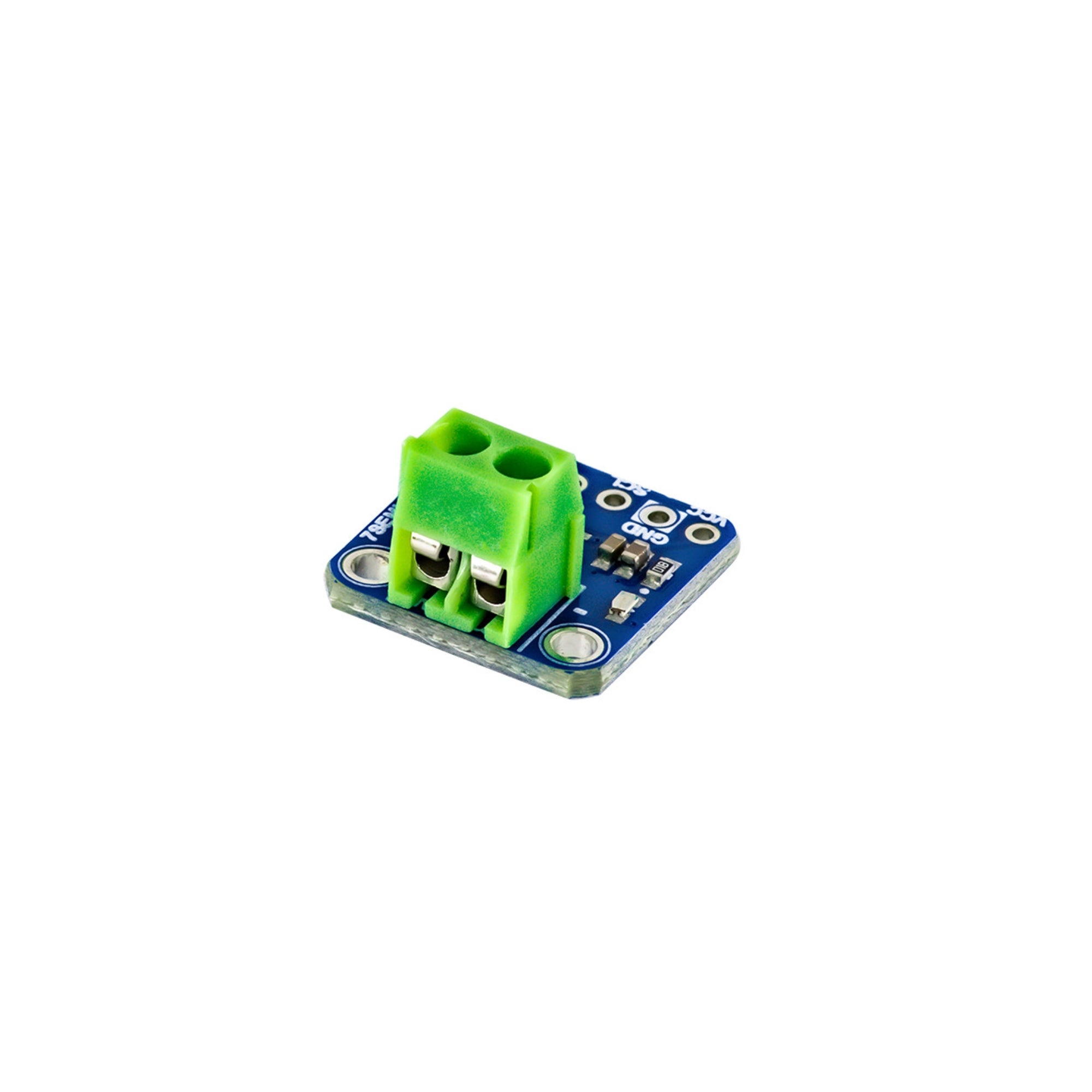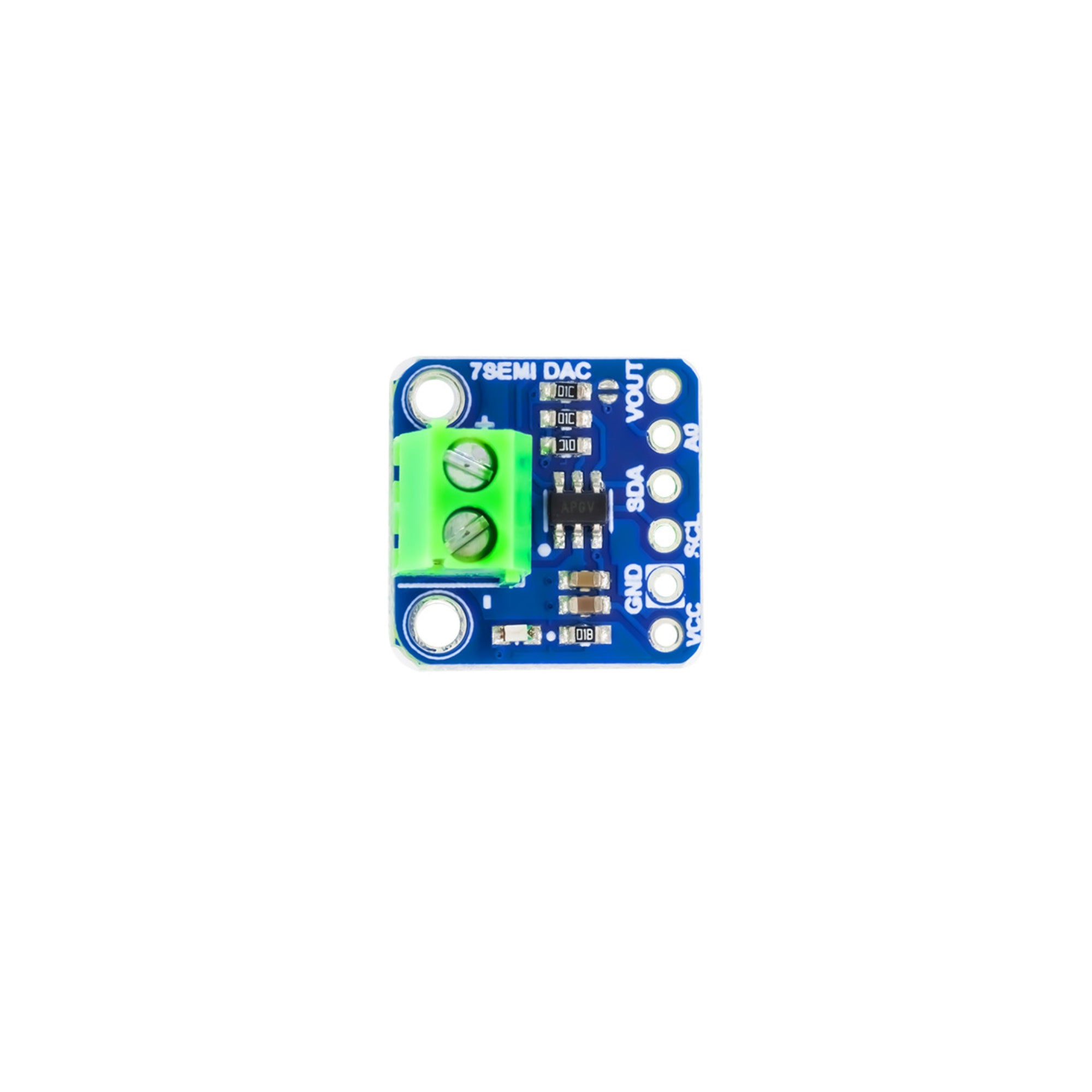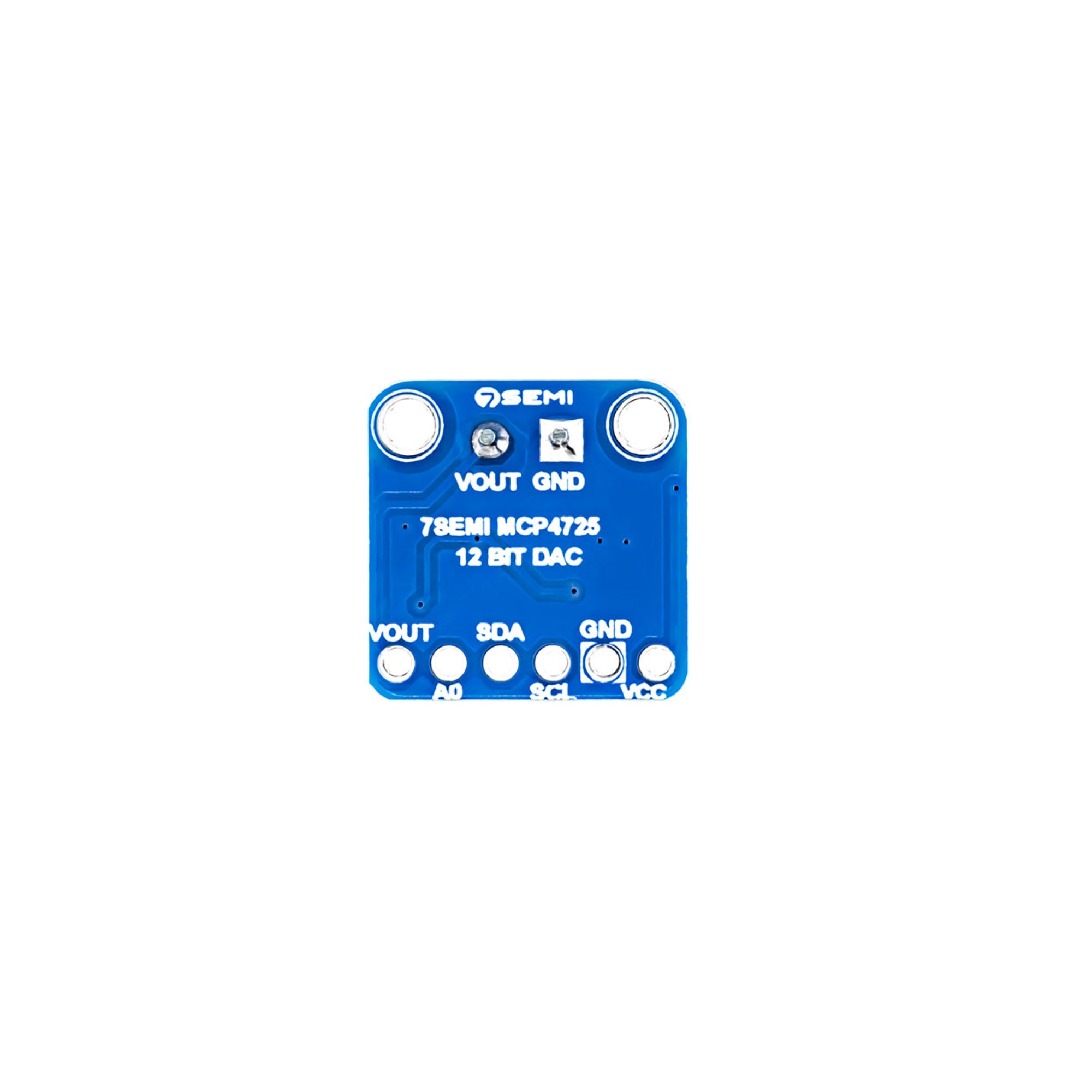Description
7Semi MCP4725 12bit DAC Breakout I2C Digital-to-Analog Converter
The 7Semi MCP4725 12-bit DAC Breakout is a precision digital-to-analog converter module designed to generate true analog voltage outputs using an I²C interface. It is based on the MCP4725 IC, which features a 12-bit resolution and built-in EEPROM memory to store the last output value. The module provides smooth and stable analog output, making it ideal for applications that require voltage control, waveform generation, and analog signal interfacing. Its compact breakout design ensures easy integration with Arduino, ESP32, STM32, and other microcontrollers.
Technical Specifications:
- DAC Resolution: 12-bit (4096 steps)
- Output Voltage Range: 0V to VDD (rail-to-rail output)
- Supply Voltage: 2.7V to 5.5V
- Interface: I²C (100kHz, 400kHz, up to 3.4MHz)
- Non-Volatile Memory: Onboard EEPROM retains last output value after power-off
- Typical Settling Time: 6µs
- Output Current: Up to 25mA (typical)
- I²C Address: Configurable via A0 pin or solder jumper
- Compatibility: 3.3V and 5V logic systems
- Output Type: Voltage output, buffered
- Power Consumption: Low power operation suitable for battery-powered systems
- Operating Temperature: -40°C to +125°C
- Board Type: Compact PCB with standard 2.54mm header pins
Features:
- 12-bit precision digital-to-analog converter for smooth voltage control
- I²C communication for easy integration with microcontrollers
- Built-in EEPROM memory retains output after restart
- Rail-to-rail output ensures full-scale voltage utilization
- Compact and breadboard-friendly design
- Low power consumption suitable for portable devices
- High-speed operation with fast settling time
- Compatible with Arduino, ESP32, Raspberry Pi, and STM32 boards
- Simple voltage reference control without PWM noise
- Provides stable and accurate analog output
Applications:
- Signal generation and waveform output
- Sensor calibration and offset voltage generation
- Analog control for actuators, servos, and motor drivers
- Voltage reference and bias generation in embedded systems
- Audio and analog modulation applications
- Data acquisition and control systems
- Industrial automation and test equipment
- IoT devices requiring analog control output
- Research, laboratory instrumentation, and educational experiments
- Replacement for PWM-based analog output in precision systems



